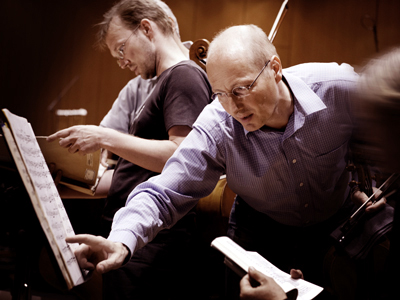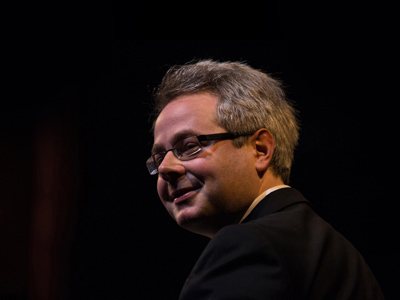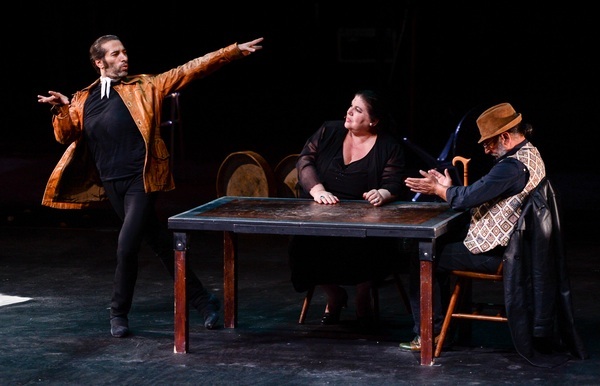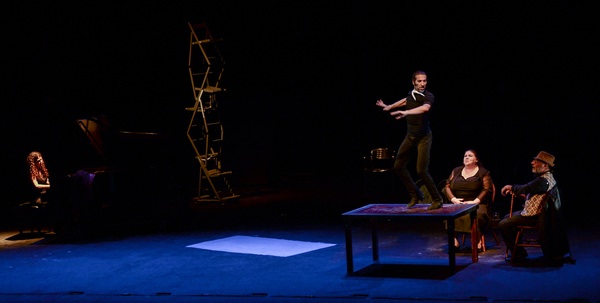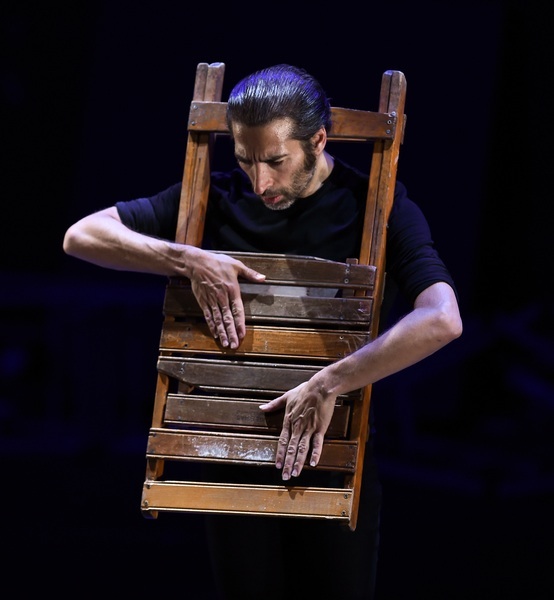By Sedgwick Clark
Just as New York Philharmonic audiences had gotten used to hearing Alec Baldwin’s subdued tones asking them to turn off their cell phones, they were surprised to hear Bryn Terfel and Emma Thompson making a Sweeney-themed plea before the orchestra’s five performances of Stephen Sondheim’s Sweeney Todd (3/5-8). And then, before Alan Gilbert conducted an all-Carl Nielsen concert the following week, none other than Whoopi Goldberg urged us to check those noisy cell phones.
These seemingly innocent changes in the Philharmonic’s anti-cell phone crusade made me wonder if Baldwin had become too hot to handle? After all, in a lengthy, testy, scatological tirade in New York magazine (February 24, 2014), he explained in no uncertain terms why he was saying “good-bye to public life” in the city in which he has lived since 1979, citing predatory paparazzi, loathsome, prevaricating, and despicable media, media hounding of his wife, and endangerment of his baby daughter, while also admitting that some of his own comments and behavior may have brought on some of his problems. Los Angeles, with its gated communities to segregate movie stars from their fans and the media, which he once scorned, was looking more attractive than it once did.
Baldwin, an avid classical music lover and supporter of the arts, has been host of the Philharmonic’s national broadcasts for five years, when he was riding high and winning Emmy awards for his role on 30 Rock, but his recent problems made me curious to know if he was including the Philharmonic in the “public life” he was threatening to leave. So I called Katherine E. Johnson, the orchestra’s director of media and public relations, to get the skinny:
“Whoopi Goldberg was elected to the New York Philharmonic’s Board of Directors in January 2013. In addition to recording our new cell phone announcements—which will play in rotation with those recorded by our radio host, Alec Baldwin—we are exploring other ways in which she might be involved with the Philharmonic’s activities that align with her interests, such as in the area of education.”
Why Are Opera Companies Tanking?
Musicalamerica.com reported on March 20 that the San Diego Opera will close its doors on June 30 after 28 consecutive seasons of balanced budgets. The piece continued with other companies that have closed their doors in recent years (and MA.com editor Susan Elliott sent me others that date back further): Opera Hamilton, Ontario (January 2014), the New York City Opera (2013), Opera San Antonio (2012), Opera Boston (2011), Lyric Opera of San Diego (2011), Cleveland Opera (2010), Spokane Opera (2010), Connecticut Opera (Hartford, 2009), the Baltimore Opera (2009) and Opera Pacific (Orange County, 2008). Yesterday’s website (3/26) reports that Indianapolis Opera has just announced cancellation of its fourth and final opera of the season, Britten’s Albert Herring, due to slow sales. Rather ominous.
Undoubtedly, the reasons are complex, including the proliferation of arts organizations such as the National Endowment of the Arts in 1965. Also, opera on video became a contender in the ’80s. One incredible success story shines out, however: The Met in HD, which began in its 2006-07 season. Concurrent with the Met’s HD success is the fall-off of its own live-opera ticket sales. Some opera-aficionado friends in New York tell me they often prefer seeing Met productions in HD—and not just due to higher ticket prices.
Looking Forward
My week’s scheduled concerts (8:00 p.m. unless otherwise noted):
3/28 Carnegie Hall. Kronos Quartet and Friends; Wu Man, pipa; Pannonia Quartet; Face the Music Quartet; Brooklyn Youth Chorus. Additional guest artists tba. Works by Terry Riley, Pelle Gudmundsen-Holmgreen, Philip Glass, Aleksandra Vrebalov, and more. 40th Anniversary Celebration.
3/29 NJPAC at 8:30. Israel Philharmonic/Gianandrea Noseda. Ravel: Daphnis et Chloé, Suite No. 2; Ma Mère l’oye, suite. Fauré: Pelléas et Mélisande, suite. Berlioz: Symphonie fantastique.
4/3 Avery Fisher Hall at 7:30. New York Philharmonic/Pablo Heras-Casado; Peter Serkin, piano. Britten: Four Sea Interludes from Peter Grimes. Bartók: Piano Concerto No. 3. Shostakovich: Symphony No. 10.
